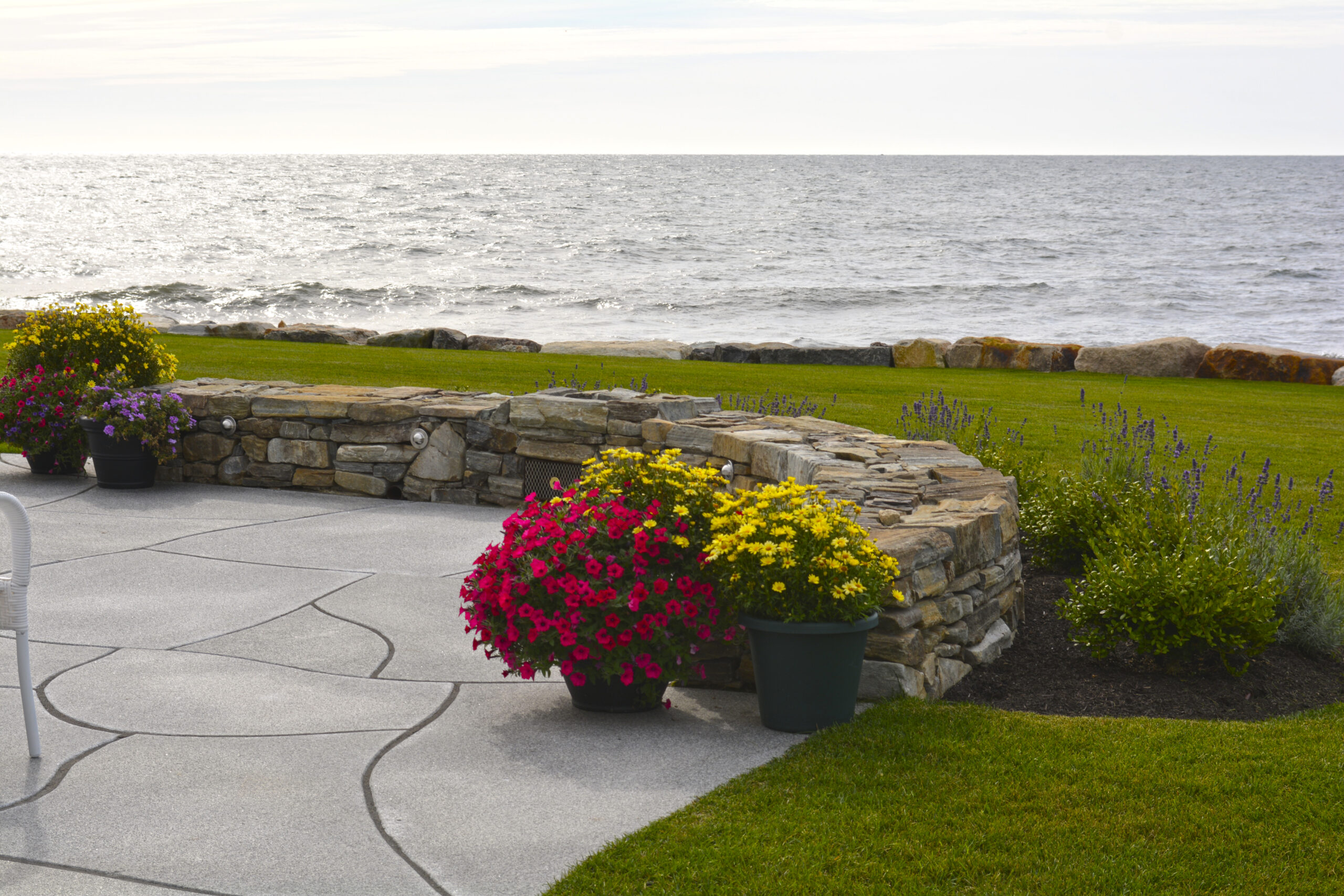Transform Your Outdoor Space with Summer Blooms
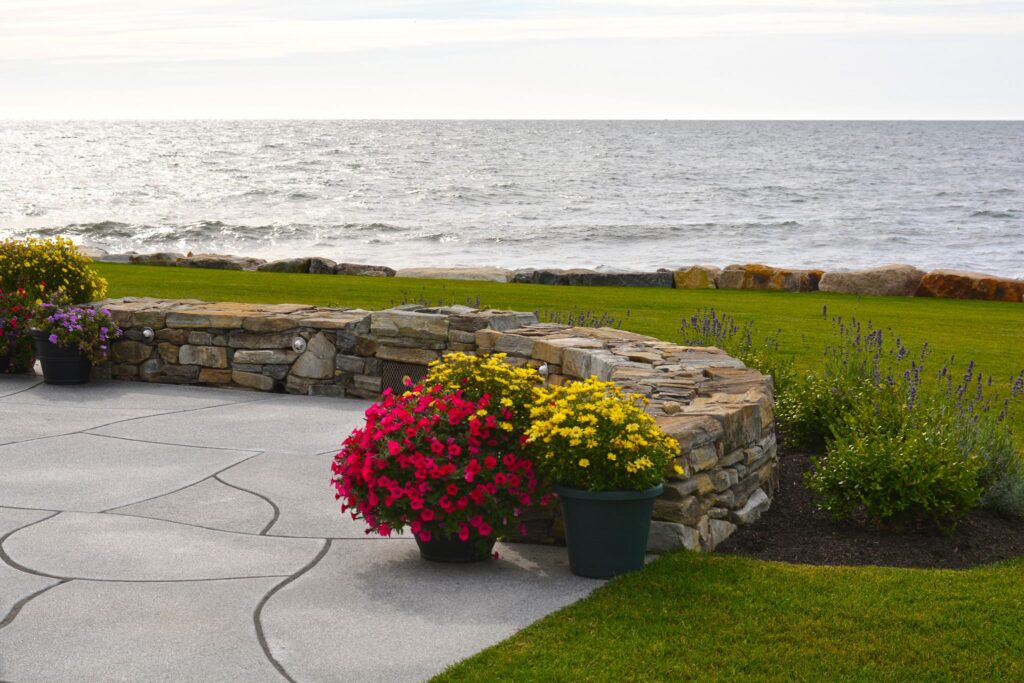
From brilliant blue hydrangeas to vivid geraniums, summer flowers are an excellent way to add vibrant pops of color and texture to any backyard. With thousands of unique varieties available, the options are nearly limitless when creating your ideal landscape with summer blooms.
Whether lining the side of a granite pathway or sitting in a planter atop a stone patio, summer flowers are the perfect addition to natural stone hardscape features. When combined with flowering plants, shrubs and grasses, the possibilities for landscape color and texture are virtually endless. Swenson Granite Works offers a range of natural stone products to complement your outdoor space all year round. Visit your local Swenson Granite Works store.
When searching for the perfect flowers for your outdoor space, it’s important to choose blooms that will survive even the hottest summer days. Factors like maintenance, water and light requirements are also important considerations. Choosing flowers, plants and shrubs that thrive in heat is a great way to ensure a brightly colored backyard all summer long.
Petunias


A wide selection of petunias are available at Sixteen Acres Garden Center in Springfield, MA.
An affordable and easy-to-grow option, petunias are one of the most popular flowering annuals for backyard spaces. This trumpet-shaped flower comes in nearly every hue imaginable and is an excellent way to add visual interest to your landscape.
Andy Grondalski, Nursery Manager at Springfield, MA’s Sixteen Acres Garden Center, says petunias are a favorite summer flower among customers, largely because they are easy to grow. “They are low-maintenance, you just have to water and feed them.”
Although they will tolerate shade, petunias produce more blossoms in full sun, making them an excellent summer flower. While sufficient sun and watering are essential for proper care, be sure to allow the soil to dry between thorough waterings, especially for container-grown petunias.
Grondalski recommends Wave petunias as a popular, low-maintenance variety with a spreading growth habit, making them perfect for ground cover, filling out flower beds, or creating a natural landscape border alongside pavers or walkways.

Petunias and daisies add a colorful array of texture beside a Woodbury Gray granite patio. Project by Great Works Landscape.
Geraniums


Pink, red and salmon-colored Zonal geraniums at Sixteen Acres Garden Center.
Geraniums are another colorful, low-maintenance option for decorating your outdoor space. They are relatively easy to grow but require sufficient sun to bloom properly. Geraniums come in a variety of colors from pale pink and lilac to deep red and purple and are excellent for hanging baskets, containers and flower beds.
For proper maintenance, make sure to water geraniums thoroughly, especially in hot weather. Although they love the sun, they will require some shade in regions with especially hot summers.
Not only do geraniums produce attractive blooms, but several varieties offer unique, variegated leaves that are often just as interesting as their flowers. Even after the summer has ended, these varieties will still add visual interest with their unique foliage.
Marigolds
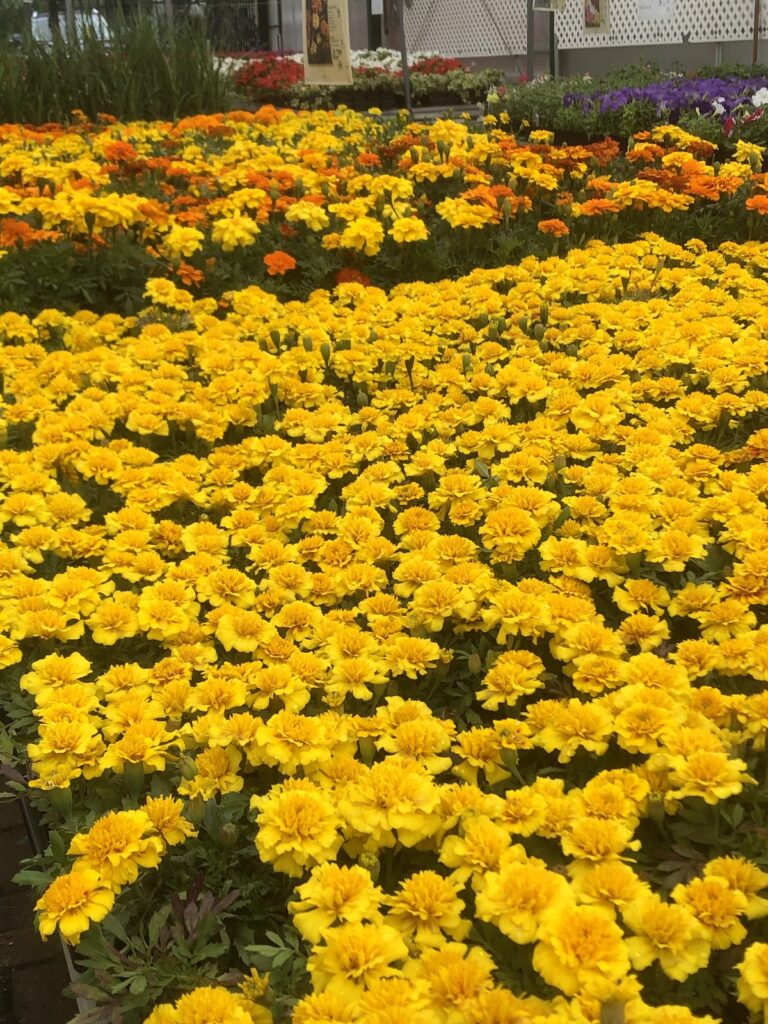
Marigolds create a sea of color at Sixteen Acres Garden Center.
Popular for their warm and vivid colors, marigolds are another excellent option for summer flowers. They are available in an assortment of colors, from bright yellow and orange to deep maroon and cream.
Marigolds thrive in dry, hot environments and can be planted in the sunniest areas of your backyard. When caring for your marigolds, be sure to avoid overwatering to avoid root rot.
Marigolds’ strong fragrance repels deer and other pests better than other annuals, making them a great option for homeowners who live in wooded or rural areas. They can even be planted in beds to protect other flowers.
Phloxes
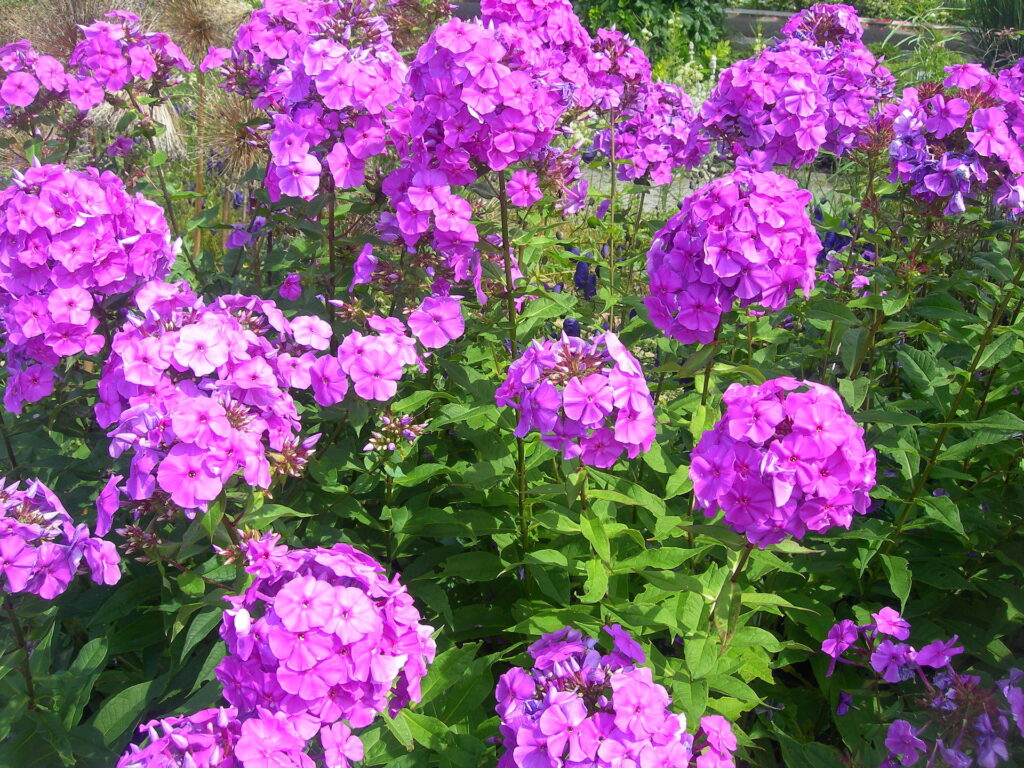
Phloxes are more resistant to changes in climate than other flowers and will last longer throughout the year, making them popular among New England homeowners. A versatile option, they range in color from pink to blue and come in several different heights.
Most phlox species require adequate soil drainage and full sun along with plentiful watering. Gardenia recommends adding summer mulch to keep the root area cool and damp throughout the season.
“Tall phloxes are popular favorites for customers,” says Grondalski. Summer phlox is the tallest variety, reaching as high as five feet.
Sedums


Sedums come in a wide array of colors and textures and are often used for ground cover.
Flowering sedums are an excellent low-maintenance option, thriving in low water, high sun and most soil types. Available in more than 600 different varieties, they come in a wide range of shapes and sizes, with some producing red, yellow or white flowers.
Creeping sedums provide excellent ground cover and can create a lush contrast to hardscape designs, whether used to line stone walkways or add dimension and texture to garden beds. If planting alongside other plants, be sure to choose options that also thrive in low moisture and full sunlight.
Coneflowers
Surrounded by coneflowers, hostas, astilbe and star clusters, this spa is made from weathered quarry veneer with a bluestone cap. The step is a single Woodbury gray thermal top, rock face step. Bluestone pavers were used as stepping stones. Project by Steven Desmarais Contracting.
For popular perennials, Grondalski recommends coneflowers like rudbeckias (also known as Black-Eyed Susans) or echinacea. These bright, colorful perennials are known for their unique shape. Rudbeckias are typically bright gold with a brown center, while echinaceas come in a wide variety of colors, ranging from deep purples and reds to bright yellows.
Coneflowers are also one of the easiest perennials to grow, requiring only occasional pruning and watering. They love the sun and their deep taproots make them drought-resistant. Like marigolds, coneflowers will repel deer while attracting birds and butterflies.
A popular way to plant coneflowers is to create a multicolored border around your yard using different varieties of rudbeckia and echinacea.
“With the addition of so many new echinacea forms, it is possible to design an entire landscape centered on this flower,” says The Spruce.
Foliage and Ornamental Grasses

Variegated hostas add lush, green foliage to any outdoor space.
Flowering plants offer pops of color in the spring and summer when in bloom, while also providing lush ground cover with their leaves throughout other seasons.
Hostas provide unique, two-tone leaves and come in brilliant shades of green, gold and blue. They are very easy to care for and, although there are hosta varieties that can grow in full sun, most prefer partial shade. To ward off nearby deer, it’s a good idea to fence in these plants or grow them close to the house.
Heucheras are another easy-to-grow foliage option available in a variety of colors, including green, bronze and deep purple. “A lot of their foliage is either variegated or speckled or has some nice bright colors,” says Grondalski. They are best suited for partial shade but will tolerate full sun if the soil is kept adequately moist.

Ornamental grasses add texture to the smooth granite walkway in this Andover, MA home. Project by Andover Landscape.
Ornamental grasses are a great way to add texture and interest to different outdoor elements. Chinese Fountain Grass is a heat-tolerant option that requires full sun and well-drained soil. It’s bottlebrush plumes can grow up to three feet tall and add a soft texture to the landscape.
Flowering Shrubs
A hardier alternative to smaller blooms, flowering shrubs are a common favorite among homeowners who want to add a splash of color to their yards.
“For trees and shrubs, hydrangeas are very popular, especially the reblooming varieties,” explains Grondalski. “Customers are always looking for reblooming options because it gives you a long period of color, especially out of a shrub.”
Hydrangeas range from bright blues to hot pinks. According to Grondalski, Summer Crush hydrangeas are a popular favorite among customers this year for their bright fuchsia blooms.
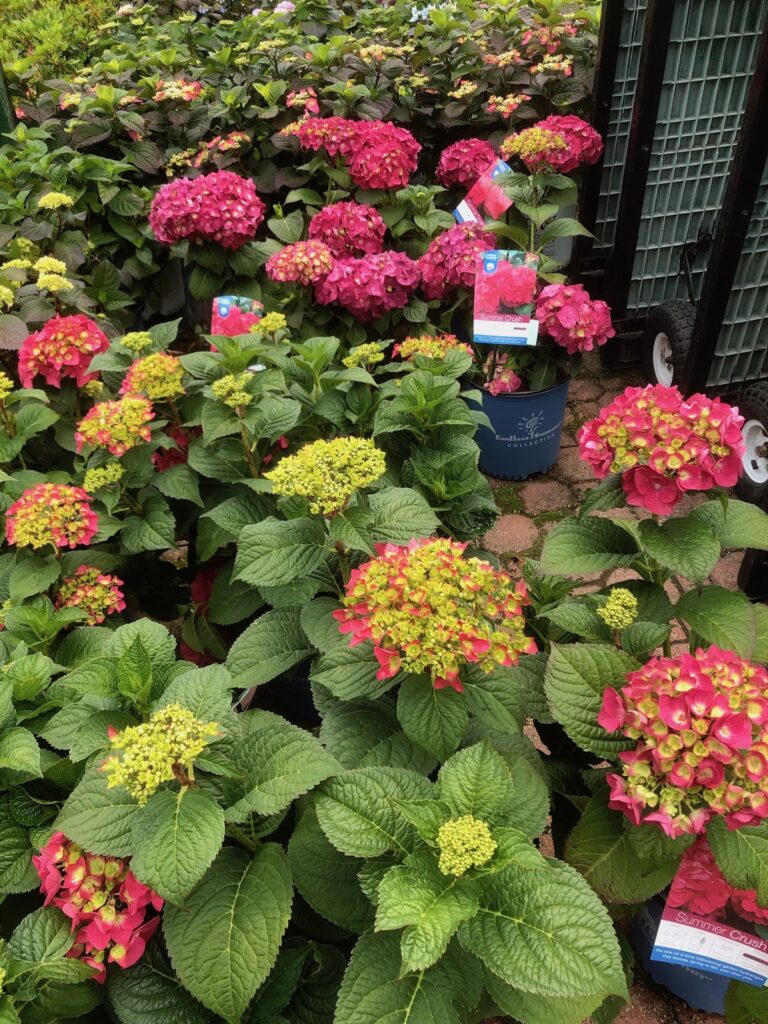
Summer Crush hydrangeas are a customer favorite at Sixteen Acres Garden Center.
“Hydrangeas grow best in partial shade areas,” explains Real Simple. “(It’s best to plant) the hydrangeas in an area that gets about five to six hours of sun, followed by dappled shade.” It’s also important to water your hydrangeas thoroughly at least once a week.
Azaleas are widely known for their spring flowers, but they are also available in several varieties that bloom in the summer like the Plumleaf Azalea or the Western Azalea. They have similar sunlight and water requirements to hydrangeas.

Azalea bushes add a splash of hot pink to the front of a home. Project by Ahronian Landscaping and Design.
Tips for Maintenance and Planting
“When it comes to flowers, maintenance is very important, even if it’s very low or little,” Grondalski explains. While some flowering plants and bushes require less attention than others, flowers generally require more maintenance than other plants and often need more water, fertilizer and high-quality soil.
Homeowners can plant flowers in virtually any part of their yard, depending on the lighting and soil conditions of their property. Decorative planters and hanging baskets make it possible to add flowers to places they normally couldn’t grow, like on your front porch, stairs or back patio. “You can add pots anywhere you want color, or anywhere you’re trying to create a space outdoors to enjoy: decks, patios, and the front of the house for decoration or curb appeal,” says Grondalski.
Tips for Soil and Mulch
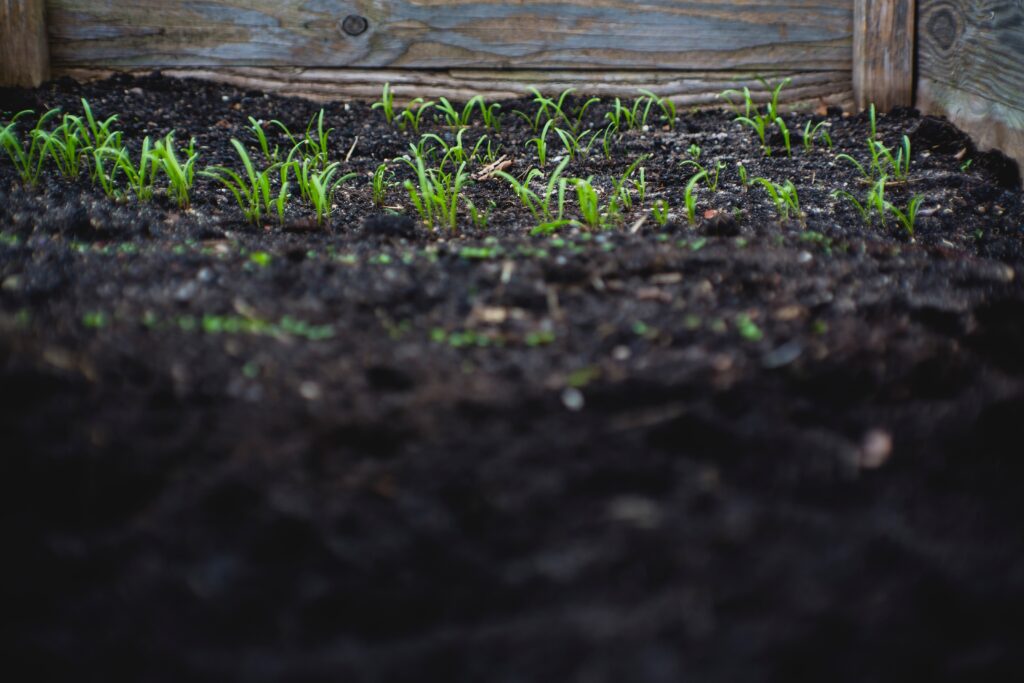
Whether you’re planting in a container or digging into the landscape, fertile soil is a must. For pots and planters, always buy a light potting mix specifically made for container growing. Pots with drainage holes help to prevent root rot and allow the soil to dry between waterings.
Before planting a flower bed, it’s important to create an in-ground environment where your plants can thrive. Fertile soil should be dark brown, moist, and somewhat loose in texture. Look out for signs of low-quality soil, which may be dry, pale, sandy and difficult to work with.
Over time, the nutrients in the soil grow depleted and require replenishment. Liquid fertilizers are a great way to add nutrients back into an existing flower bed. “Fertilizing is key,” says Grondalski. “Some soils even have built-in, slow-release fertilizers.”
Adding a layer of mulch around plants or trees is another great way to help improve the moisture retention of soil, and it will also help suppress weed growth and maintain optimal soil temperature. “All you need is a thin layer. If you’re mulching a bed, you don’t want the mulch to go up over your plants,” advises Grondalski.
Using Natural Stone with Flowers
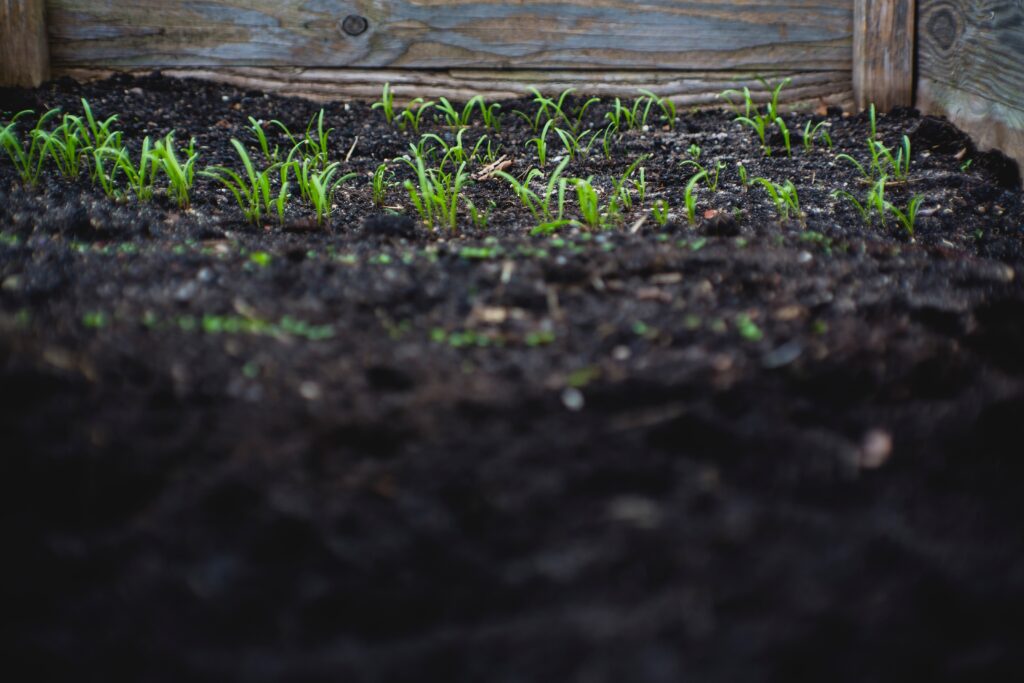
Swenson Granite Works’ granite edging provide a structured contrast to an array of garden beds.
There are countless opportunities to incorporate summer flowers with natural stone features. Granite can be used as edging to create an elegant perimeter around a flower bed, or it can be used to make a stepping stone pathway through a garden.
Stone can even be used as a mulch for particularly drought-resistant plants like sedums. Grondalski recommends placing a landscape fabric between the soil and natural stone mulch, keeping in mind that stone will retain heat from the sun.
Another creative use of natural stone with flowers is to create the look of a dry river bed in a trench. Place natural stone rocks among scattered flowers, small shrubs, and grasses to create a natural landscape design.
A hanging flower basket is a great way to add a vertical dimension of color and interest in your yard. Flower baskets and hanging pots compliment porches, fences and entryways.
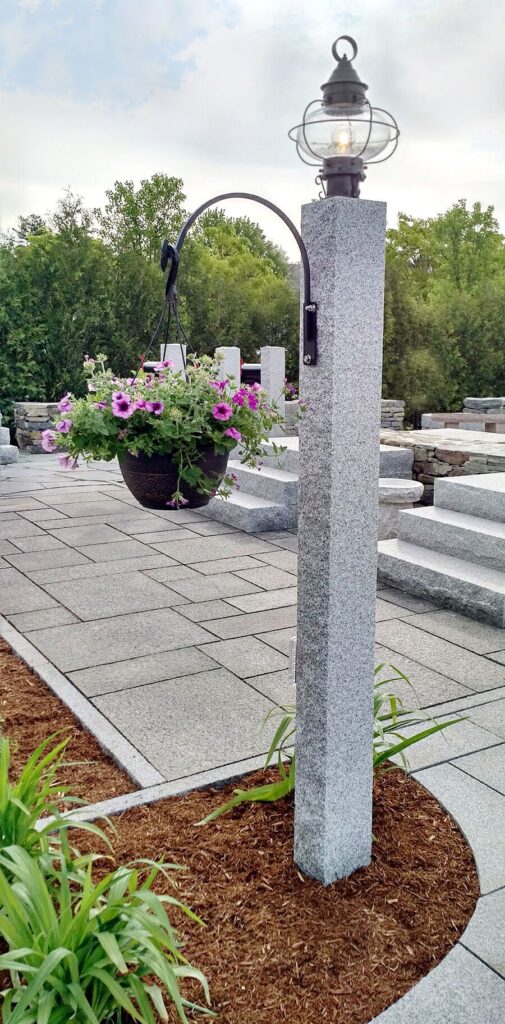
Woodbury Gray granite post with hanging flower basket
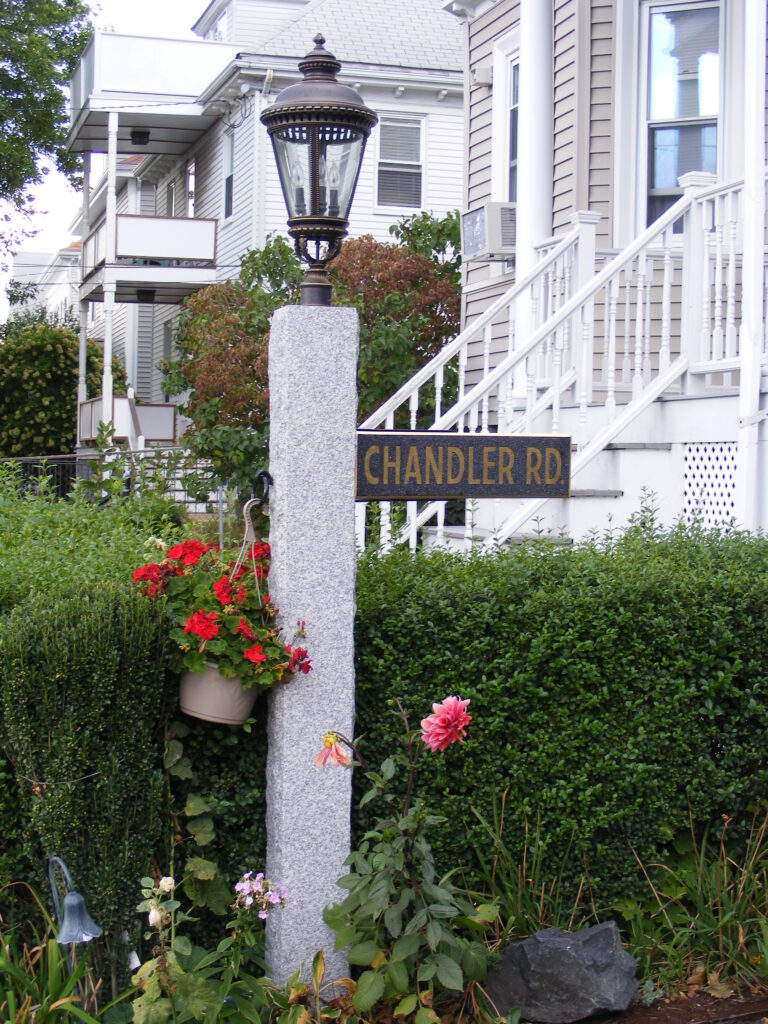
A flower basket hangs from a wrought iron ring on this Woodbury Gray granite lamp post.
“There are unlimited uses for flowers and natural stone, depending on what your imagination brings,” says Grondalski.
